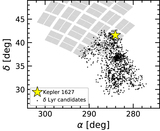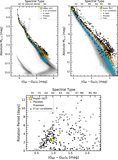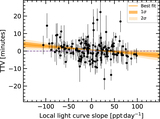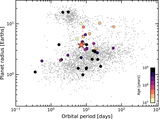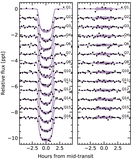Image Details
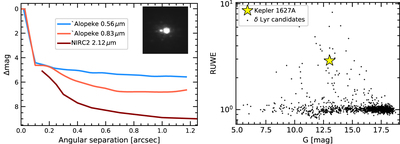
Caption: Figure 4.
Kepler 1627 is a binary. Left: High-resolution imaging from Gemini North/‘Alopeke and Keck/NIRC2 shows an ≈M3V companion at ρ ≈ 0.″16, which corresponds to a projected separation of 53 ± 4 au. The inset shows a cutout of the stacked NIRC2 image (North is up, East is left, and the scale is set by the separation of the binary). The lines show 5σ contrast limits for the ‘Alopeke filters, and 6σ contrast limits for NIRC2 outside of 0.″15. Right: Gaia EDR3 renormalized unit weight error (RUWE) point estimates for candidate δ Lyr cluster members. Since other members of the cluster with similar brightnesses have comparable degrees of photometric variability, the high RUWE independently suggests that Kepler 1627 is a binary.
Copyright and Terms & Conditions
© 2022. The Author(s). Published by the American Astronomical Society.



